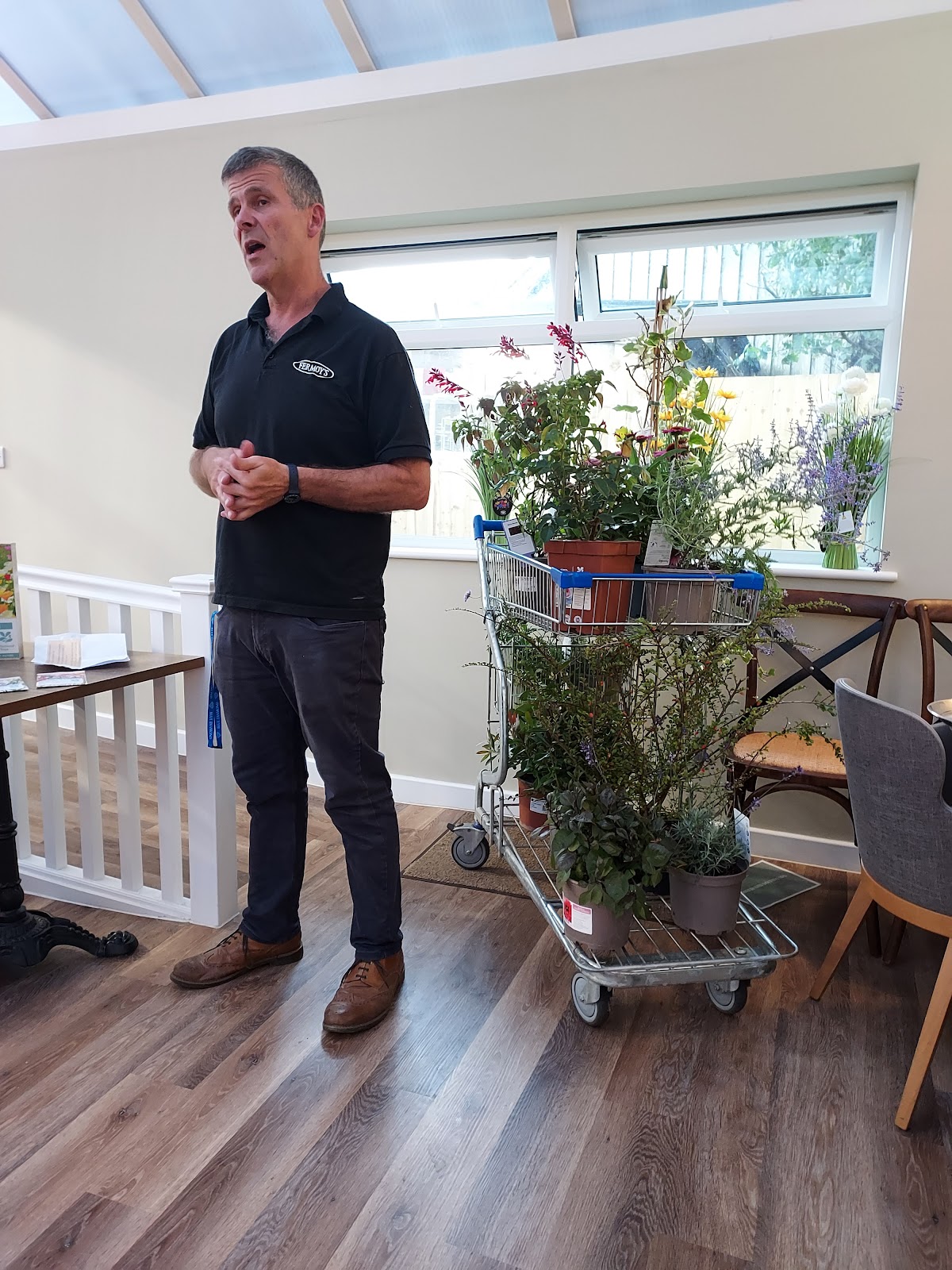35 of us + a WI visitor from Corsham in Wiltshire, enjoyed a really splendid afternoon at Fermoy’s Garden Centre this afternoon. From the photos it looks as if it was all very serious! Not so! Our speaker was very entertaining and interesting. We had a very good time and learned a lot.
Our speaker talked to us about pollinators to plant in our gardens. He began by explaining that Fermoys is part of the Blue Diamond group which works in conjunction with the National Trust to support their work in encouraging and developing plants which assist bees and other insects to pollinate. They did well at the Chelsea Garden Show this year, winning a Silver Gilt award.
Recommended evergreen plants:
ivy, late flowering,
cotoneaster,
callistemon (bottle brush plant) which should be cut back immediately after flowering so that another flower can grow, without leaving the brown stem from the old flower.
Hebe,
lavender - which should be cut back now, towards the end of August. Doing this will give the plant a chance to grow new shoots ready for the spring, to give it a strong head start next season. When choosing a lavender plant, if you are looking for a taller, floppy plant, look for ‘augustifolia’ next to the name. If you prefer a more compact lavender bush, find ‘intermediate’ on the label.
Semi evergreens:
Russian sage which needs to be cut down by half in the autumn, in order to maintain a dense, bushy growth.
Salvia (hot lips) which also benefits from cutting back immediately after flowering, as a second flowering may occur. In autumn, cut down by half.
Echinacea is the George Clooney of the bee world! Scabious are good for butterflies and will flower all year providing you dead head the plant.
Achillea
Sedum - easy to look after, late flowering
Many thanks to Ann and Lynn for organising it all. Thank you to Jayne for the photos.




No comments:
Post a Comment